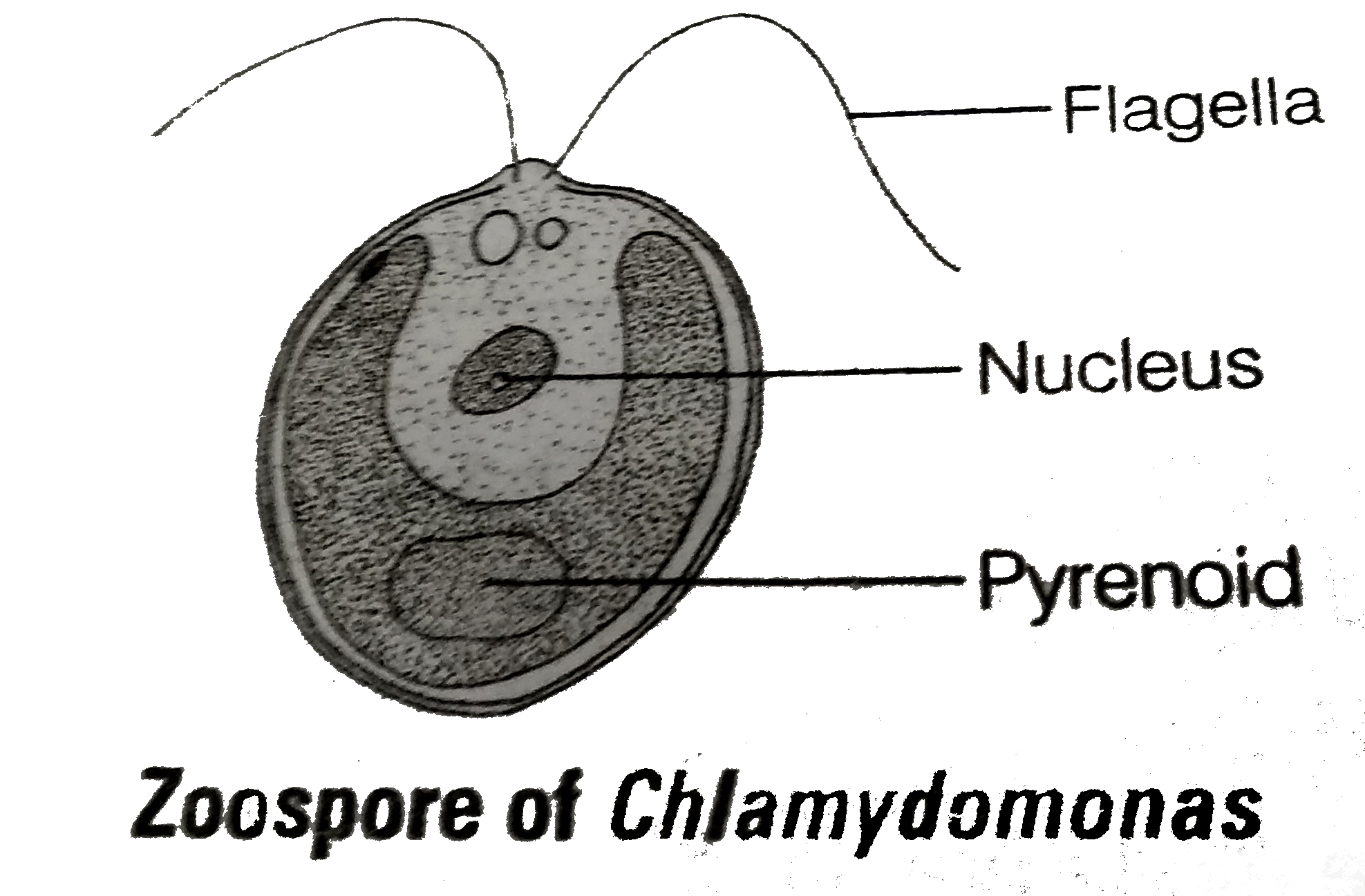Algae are known to reproduce asexually by variety of spores under different environmental conditions. Name these spores and the conditions under which they are produced.
Asexual reproduction in algae is very common mean of reproduction.
Text Solution
Algae and their spores exhibit enormous diversity and they very greatly in their level of specialisation. Asexual reproduction by spores and their types are described below
(a) By Zoospores These are mobile flagellated spores. In which protoplasm of each vegetative cell undergoes repeated longitudnal division either into 2 or 4 rarely 8 or 16 daughter protoplast, The parent cell loses its flagella, before the onset of division
After the last series of division, each daughter protoplast secretes a cell wall and neuromotor apparatus that develops two flagella, eyespots and contractile vaculoes,
The, each of the dauther cell formed resembles the parent cell in all aspects except the small size
Formation of zoospores is very common under favourable conditions

(b) By Aplnospores These are the non-motile spores. They are asexually formed with in a cell, in this the protoplast withdraws itself from the parent wall, rounds up and develops into aplanospores which may either germinate directly or may divide to produce zoospores.

(c) By Hypnospores in this, the protoplasm withdraws from the cell, rounds up an develop a thick wall under unfavorable condition. These resting spores are called as hypnospores. They are red in colour due to presence of haematochrome e.g., Vaucheria, Ulothrix
(d) Akinetes These are special vegetative thick walled cells present in the filaments which remain under dorment state and return to germination under favourable condition and can also with stand unfavourable condition as Spirogyra
(e) Statospores The are thick walled spores produced in diatoms
(f) Neutral spores In some algae, the protoplastm of vegetative cells directly functions as spores called as neutral spores (e.g., Ectocarpus).
|
Topper's Solved these Questions
- BIOLOGICAL CLASSIFICATIONBOOK - NCERT EXEMPLARCHAPTER - BIOLOGICAL CLASSIFICATIONEXERCISE - Short answer
7 Videos
- ANIMAL KINGDOMBOOK - NCERT EXEMPLARCHAPTER - ANIMAL KINGDOMEXERCISE - LONG ANSWER TYPE QUESTIONS
4 Videos
- BIOMOLECULES BOOK - NCERT EXEMPLARCHAPTER - BIOMOLECULES EXERCISE - Long Answer Type Questions
5 Videos
Similar Questions
Knowledge Check
Asexual reproduction in most brown algae is by
APear-shaped biflagellate zoospores having two unequal laterally attached flagellaBPear-shaped tetra flagellate zoospores having two unequal laterally attached flagellaCPear-shaped biflagellate zoospores having two equal laterally attached flagellaDPear-shaped biflagellate zoospores having two unequal apically attached flagellaAsexual reproduction in maximum Brown Algae is by:-
ABiflagellated zoosporeBSingle flagellated zoosporesCAplanosporeDNone of theseThe most common method of asexual reproduction in algae involves formation of
AConidiaBAplanosporesCZoosporesDAkinete
Asexual reproduction in maximum Brown Algae is by:-
View SolutionName an algae that reproduces asexually through zoospores
View SolutionThe most common method of asexual reproduction in algae involves formation of
View SolutionName an alga that reproduces asexually through zoospores
View SolutionAsexual reproduction in fungus occurs by spores known as
View Solution
